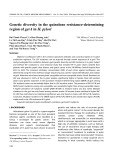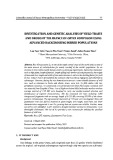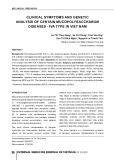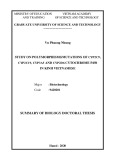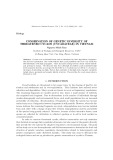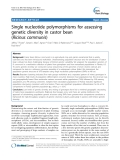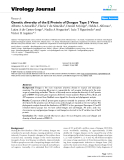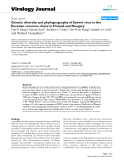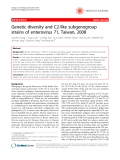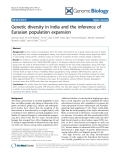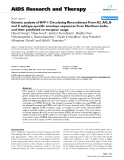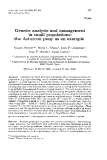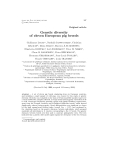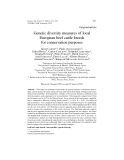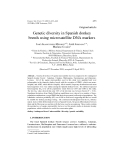
Int.J.Curr.Microbiol.App.Sci (2017) 6(3): 239-246
239
Original Research Article https://doi.org/10.20546/ijcmas.2017.603.026
Genetic Analysis and RAPD Polymorphism in Wheat
(Triticum aestivum L.) Genotypes
S.D. Tidke1* and P.S. Ranawade2
1MGM, Institute of Biosciences and Technology, Aurangabad, India
2Modern College of Agricultural Biotechnology, Pune, India
*Corresponding author
A B S T R A C T
Introduction
Wheat (Triticuma estivum L.) is an important
cereal crop widely cultivated in India and
world providing food calories and protein to
the human population. Wheat is the annual
plant belong to family Poaeceae (Singh et al.,
2004). It is a good source of protein, minerals,
vitamins (Thiamin, Riboflavin), sugar and
fats. A protein in wheat varies from 7 to 24
per cent (Cauvain and Stanley, 2003).
Triticum aestivum commonly contains
three different but genetically related
genomes (A, B and D) with total genomic size
of 1.7 x 1010 base pairs (Moore et al., 1995).
Wheat occupies a place of prominence among
other cultivated cereal crops in India. In view
of possible implementation of plant varietal
protection in India in the near future,
increasing attention is being paid towards
comprehensive characterization of elite Indian
cereal germplasm, supplementing the existing
International Journal of Current Microbiology and Applied Sciences
ISSN: 2319-7706 Volume 6 Number 3 (2017) pp. 239-246
Journal homepage: http://www.ijcmas.com
Assessment of genotype diversity was studied using released and in pipeline
genotypes of wheat, of these 22 were released and 14 were in pipeline. Genetic
diversity among 36 wheat genotypes was studied using Random amplified polymorphic
DNA (RAPD) analysis. 21 RAPD primers (RPI primers) were used for screening 36 wheat
genotypes from which 2,868 fragments were amplified. It was observed that 63.3% bands
were polymorphic and 36.4% were monomorphic. The percent of polymorphic bands in
banding pattern was calculated and it was highest in RPI-22 (81.3%) while lowest was
recorded in RPI-2 (33.8%) and highest PIC value was observed in RPI-22 and RPI-25
(0.88) while lowest in RPI-7 (0.70). Maximum fragments were produced in RPI-1 (200)
and minimum in RPI-7 (82). In banding pattern some unique bands were seen, total 7
unique bands were observed. Genetic relationship between wheat genotypes was
determined on the basis of Jackard IJ pair wise similarity coefficient values (Similarity
coefficient values ranged from 0.09 to 0.99) and dendrogram was generated by UPGMA
(Unweighted Pair Group Method with Arithmetic Mean) cluster analysis using dice's
similarity matrix through NT-SYS pc software. From dendrogram 5 solitary and 8 clusters
were revealed. From above analysis average coefficient values were revealed and highest
(0.99) was observed between WSM-175.1 and WSM-163 genotypes while HD-2781 and
NIAW-34 represent lowest average similarity coefficient value (0.09). The maximum
similarity percentage i.e. 99% was found between WSM-175.1 and WSM-163 and the
minimum similarity i.e. 09% was found between HD-2781 and NIAW-34.
Keywords
Wheat, Genetic
diversity, RAPD
markers,
Polymorphism.
Accepted:
10 February 2017
Available Online:
10 March 2017
Article Info





